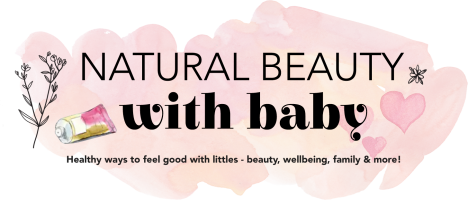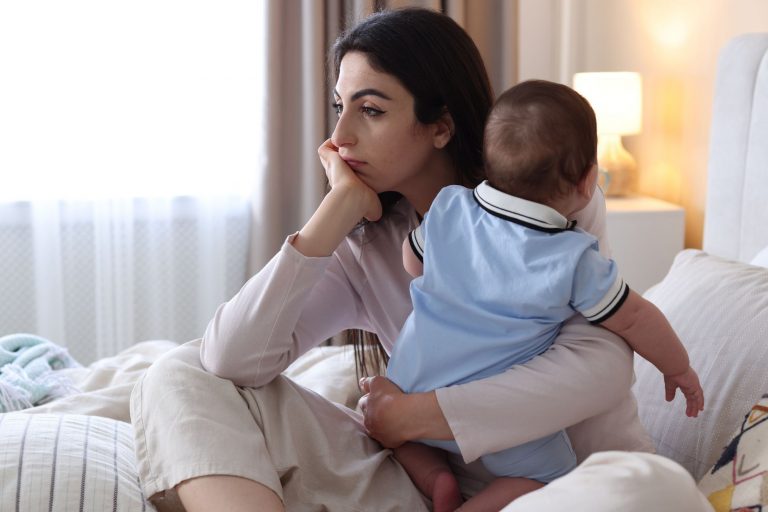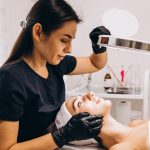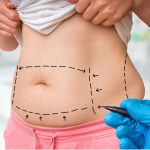“Embracing Your Post-Baby Body: Natural Approaches to Restoration and When to Get Help” is a collaborative post.
The journey of motherhood transforms our bodies in profound and beautiful ways, yet the pressure to “bounce back” after pregnancy can feel overwhelming. Social media feeds filled with celebrities flaunting flat stomachs weeks after giving birth create unrealistic expectations that leave many mothers feeling inadequate. The truth is far more nuanced—our bodies have performed the incredible feat of growing and nurturing life, and expecting them to immediately return to their pre-pregnancy state isn’t just unrealistic, it’s unfair to the remarkable work they’ve accomplished.
Understanding the real timeline of postpartum recovery helps set appropriate expectations and reduces unnecessary stress during an already challenging period. The uterus alone takes six to eight weeks to return to its normal size, while hormonal fluctuations continue for months, particularly for breastfeeding mothers. Abdominal muscles that stretched to accommodate a growing baby need time to knit back together, and skin that expanded over nine months cannot simply snap back overnight. These changes are normal, natural, and deserve patience and respect rather than criticism and rushed solutions.
The Reality of Postpartum Body Changes
Every woman’s postpartum journey unfolds differently, influenced by factors including genetics, age, the number of pregnancies, birth method, and overall health. Some women experience minimal lasting changes, while others find their bodies permanently altered in ways that no amount of diet or exercise can fully address. Understanding these variations helps mothers approach their recovery with realistic expectations and self-compassion rather than frustration and disappointment.
Diastasis recti, the separation of abdominal muscles during pregnancy, affects roughly two-thirds of pregnant women and can persist long after delivery. This condition creates a gap between the rectus abdominis muscles, often resulting in a protruding belly that exercise alone cannot flatten. While mild cases may respond to specialised physical therapy and targeted exercises, severe separations sometimes require surgical intervention to restore core function and appearance. Many women don’t realise they have this condition, instead blaming themselves for not working hard enough to lose the “baby belly.”
Skin changes represent another common concern that varies dramatically between individuals. The skin’s ability to contract after stretching depends on multiple factors, including age, genetics, hydration, and the speed of weight gain during pregnancy. Younger mothers with good skin elasticity may see significant improvement over time, while others might be left with loose skin that pools around the lower abdomen. Stretch marks, while fading from purple to silver over time, remain permanent reminders of pregnancy for many women. These physical markers tell the story of creating life and deserve recognition rather than shame.
Breast changes following pregnancy and breastfeeding can be particularly distressing for women who valued their pre-pregnancy breast appearance. The cycle of engorgement and emptying during breastfeeding, combined with hormonal fluctuations, often leads to volume loss and sagging. The Cooper’s ligaments that support breast tissue can stretch permanently, resulting in breasts that sit lower on the chest wall. While some women embrace these changes as badges of motherhood, others struggle with the impact on their self-image and intimate relationships.
Natural Recovery Methods and Their Limits
The first year postpartum should focus on gentle recovery rather than aggressive transformation attempts. The body needs time to heal from pregnancy and birth while adapting to the demands of caring for a newborn. Proper nutrition becomes crucial during this period, particularly for breastfeeding mothers who need additional calories and nutrients to support milk production. Crash dieting not only jeopardises milk supply but can also slow healing and increase fatigue during an already exhausting time.
Gentle exercise programs designed specifically for postpartum recovery can help restore core function and overall fitness without risking injury. Pelvic floor physical therapy, though often overlooked, provides essential rehabilitation for muscles that supported pregnancy and endured birth. These specialised therapists can assess and treat conditions like prolapse, incontinence, and sexual dysfunction that many women suffer in silence. Starting with breathing exercises and gradually progressing to more challenging movements allows the body to rebuild strength safely.
Patience with the recovery process cannot be overstated, as pushing too hard too soon often leads to setbacks. The hormone relaxin, which helps ligaments stretch during pregnancy, can remain in the system for up to five months postpartum, increasing injury risk. Additionally, sleep deprivation and the physical demands of caring for an infant impact the body’s ability to recover and rebuild. Many women find that realistic progress comes in waves rather than linear improvement, with good weeks followed by apparent setbacks that are actually part of the normal healing process.
Despite dedicated efforts to restore their pre-pregnancy bodies naturally, many women reach a plateau where certain changes prove resistant to diet and exercise. This reality doesn’t represent failure but rather the lasting impact of pregnancy on our physical structures. Recognising when natural methods have reached their limits allows women to make informed decisions about whether to accept these changes or explore professional interventions.
When Professional Help Makes Sense
The decision to seek professional aesthetic help after pregnancy is deeply personal and should never be made from a place of shame or external pressure. Instead, it represents a choice to address specific concerns that impact quality of life, self-confidence, or physical function. The key lies in approaching these decisions with realistic expectations and choosing providers who understand and respect the unique considerations of post-pregnancy bodies.
Timing plays a crucial role in considering any aesthetic procedures after pregnancy. Most reputable surgeons recommend waiting at least six months after delivery and three months after completing breastfeeding before considering any surgical interventions. This waiting period allows hormones to stabilise, weight to normalise, and gives mothers time to assess which changes might resolve naturally versus those requiring intervention. Rushing into procedures too soon can lead to suboptimal results and increased complications.
The evolution of cosmetic surgery has brought a welcome shift toward natural-looking results that honour the journey of motherhood rather than attempting to erase it. The Cadogan Clinic in London has emerged as a leader in this philosophy, pioneering approaches that enhance and restore rather than dramatically alter post-pregnancy bodies. Their surgeons specialise in understanding the unique anatomical changes pregnancy creates, developing techniques that work with the body’s natural contours rather than against them. This approach resonates particularly well with mothers who want to feel like themselves again without looking “done” or artificial.
Modern mommy makeover procedures have evolved far beyond the aggressive transformations once associated with the term. Today’s approaches often combine minimal interventions targeted at specific concerns rather than complete body overhauls. A mother struggling with separated abdominal muscles might benefit from a mini tummy tuck that repairs the muscle wall while removing only excess skin below the navel. Another might choose fat transfer to restore breast volume using her own tissue rather than implants, creating results that feel and move naturally.
The Importance of Honest Consultations
The rise of transparency in cosmetic surgery has particularly benefited mothers considering post-pregnancy procedures. Ethical practitioners now prioritise honest discussions about what procedures can and cannot achieve, helping women make informed decisions aligned with their values and circumstances. This honesty extends to discussing alternative treatments, recovery realities, and the importance of having completed their families before pursuing certain procedures.
The Cadogan Clinic, one of the UK’s leading clinics, champions this transparent approach through comprehensive consultations that address both physical and emotional aspects of post-pregnancy changes. Their surgeons openly discuss how subsequent pregnancies might impact surgical results, the reality of scarring, and the importance of maintaining realistic expectations. They’ve pioneered the use of 3D imaging technology that shows probable outcomes rather than idealised results, helping mothers visualise realistic improvements while understanding limitations.
This commitment to honesty extends beyond individual consultations to public education about post-pregnancy body changes. Rather than perpetuating myths about “snapping back,” leading clinics now provide resources that normalise the diverse ways bodies respond to pregnancy. This educational approach helps mothers understand that seeking help doesn’t represent weakness or vanity but rather a valid choice in their self-care journey.
Non-Surgical Options for Natural Enhancement
The expansion of non-surgical treatments has created new possibilities for mothers seeking subtle improvements without the downtime or commitment of surgery. These options work particularly well for women who aren’t ready for surgery or want to address specific concerns while maintaining a natural appearance. However, the same need for honest communication applies—non-surgical doesn’t mean miraculous, and understanding limitations prevents disappointment.
Radiofrequency and ultrasound treatments can help tighten mild skin laxity, though they cannot address severe looseness or muscle separation. These treatments work by stimulating collagen production over time, creating gradual improvements that appear natural. Multiple sessions are typically required, and results vary significantly based on individual skin quality and the degree of laxity present. For mothers with minimal excess skin who want modest tightening, these treatments can provide satisfying improvements without surgery.
Injectable treatments using the body’s own platelet-rich plasma or carefully placed dermal fillers can address volume loss in the face that often accompanies the exhaustion and stress of new motherhood. Rather than creating an artificially plumped appearance, skilled practitioners use these tools to restore youthful contours subtly. The key lies in finding providers who understand facial anatomy and ageing patterns, creating refreshed appearances rather than obvious alterations.
Body contouring devices using controlled cooling or heating can reduce small pockets of stubborn fat that persist despite healthy habits. While these treatments cannot address loose skin or replace the dramatic results of surgery, they can help mothers troubled by specific areas like love handles or bra bulge. Managing expectations remains crucial, as these treatments typically achieve modest fat reduction rather than dramatic transformation.
Supporting Your Journey, Whatever You Choose
The path to accepting and potentially enhancing your post-pregnancy body is deeply individual, influenced by personal values, circumstances, and goals. Some mothers find peace in embracing their changed bodies as beautiful evidence of their journey through motherhood. Others feel empowered by taking steps to restore aspects of their pre-pregnancy appearance. Neither choice is inherently right or wrong—what matters is making decisions that align with your authentic self rather than external pressures.
Building a supportive community becomes essential during this journey, whether you choose natural acceptance or professional intervention. Connecting with other mothers who understand the complex emotions surrounding body changes provides an invaluable perspective and reduces isolation. Online communities, local mothers’ groups, and postpartum support services offer spaces to share experiences without judgment. These connections remind us that struggling with body image after pregnancy is normal and doesn’t diminish our value as mothers.
For those considering professional help, choosing providers who understand and respect the motherhood journey makes an enormous difference in outcomes and satisfaction. Clinics like Cadogan that prioritise natural results and honest communication create environments where mothers feel heard and respected rather than pressured or judged. Their approach acknowledges that enhancing post-pregnancy bodies isn’t about erasing motherhood’s impact but rather helping women feel comfortable and confident in their evolved forms.
Creating Realistic Expectations
Whether pursuing natural recovery methods or considering professional intervention, maintaining realistic expectations protects both physical and emotional well-being. The goal should never be returning to an exact pre-pregnancy state—our bodies have been fundamentally changed by the experience of growing life. Instead, focus on achieving a healthy, functional body that allows you to engage fully in motherhood and life beyond.
Social media’s impact on postpartum body image cannot be ignored, but we can choose how to engage with these messages. Curating feeds to include diverse representations of post-baby bodies, unfollowing accounts that trigger comparison or shame, and remembering that posted images rarely reflect the complete reality all help maintain perspective. Many influencers now openly discuss their own surgical enhancements or the teams of trainers, nutritionists, and childcare providers that enable their transformations—transparency that helps contextualise unrealistic standards.
The timeline for feeling comfortable in your post-pregnancy body varies dramatically and doesn’t follow a linear path. Some days you might marvel at your body’s strength and capability, while others bring frustration with lingering changes. This fluctuation is normal and doesn’t indicate failure or weakness. Allowing space for these complex emotions while working toward your goals—whether through patient natural recovery or chosen interventions—creates a healthier relationship with your evolving body.
Moving Forward with Confidence
Your post-baby body tells a story of incredible strength, sacrifice, and love. Whether you choose to embrace every change as a badge of honour or seek professional help to address specific concerns, the decision belongs to you alone. The growing movement toward transparency in cosmetic enhancement, led by clinics like Cadogan that prioritise natural results and honest communication, has created more options for mothers seeking to feel like the best versions of themselves without sacrificing authenticity.
Remember that caring for your body—through gentle exercise, proper nutrition, patience with recovery, or even aesthetic procedures—doesn’t make you vain or selfish. Mothers deserve to feel confident and comfortable in their bodies, whatever that means for each individual. By approaching post-pregnancy body changes with self-compassion, realistic expectations, and access to honest information, we can make choices that support our overall well-being while honouring the incredible journey of motherhood.
The conversation around post-baby bodies continues evolving, moving away from pressure-filled “bounce back” culture toward acceptance of diverse experiences and choices. This shift benefits all mothers by acknowledging that there’s no single right way to navigate physical changes after pregnancy. Whether your path involves patient natural recovery, professional intervention, or a combination of approaches, what matters most is making informed decisions that align with your values and support your journey through motherhood.
Your body has accomplished something extraordinary in creating life. How you choose to honour and care for it moving forward deserves the same respect and support, free from judgment or unrealistic expectations. Trust yourself to make the choices that feel right for you, knowing that seeking help—whether from a physical therapist, counsellor, or aesthetic professional—represents strength, not weakness, in your journey toward feeling whole and confident in your transformed body.







Comments are closed.